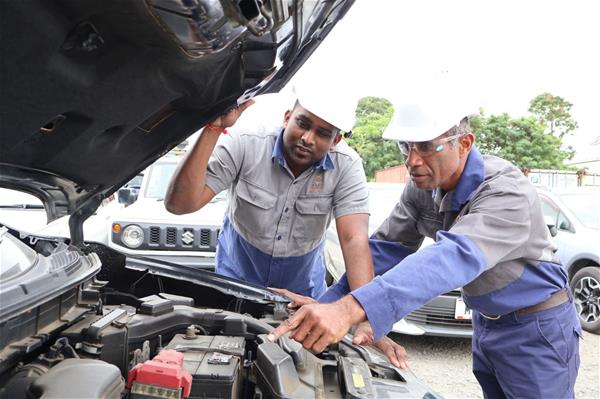SUVA, Fiji (17th October 2025): Every time you get behind the wheel, you place trust in your vehicle’s ability to get you safely to your destination. But that safety depends on how well your vehicle is maintained. Neglecting regular checks can lead to hidden faults such as faulty brakes, worn tyres, weak suspension, or poor lighting that may turn a routine trip into a serious accident.
Unfortunately, we often see a culture where safety is not given the priority it deserves. Too many motorists continue to drive vehicles with known defects, assuming “it will be fine” or delaying repairs to save costs.
This mindset puts not only the driver at risk, but also passengers, pedestrians, and other road users. Safety must always come first as no journey or convenience is worth risking lives for.
The Land Transport Authority continues to encourage all motorists to take vehicle safety inspections seriously, not only when renewing registration, but throughout the year. A simple routine check can detect issues before they become dangerous, saving lives and avoiding costly repairs.
Why regular vehicle checks matter?
Safety first: Properly functioning brakes, tyres, steering, and lights can be the difference between avoiding and causing an accident.
Early problem detection: Small mechanical issues caught early are cheaper and easier to fix.
Fuel efficiency: Well-maintained engines and properly inflated tyres use less fuel, saving you money.
Peace of mind: Knowing your vehicle is in top condition allows you to focus on the road ahead.
Simple steps to keep your vehicle roadworthy:
Schedule professional inspections every 6–12 months or as recommended by your mechanic.
Check tyre tread depth and pressure regularly.
Test lights, indicators, and brake lamps regularly.
Listen for unusual noises from the engine, brakes, or suspension. Keep up with oil changes, filter replacements, and fluid top-ups.
Remember, vehicle safety isn’t just about protecting yourself – it’s about protecting everyone who shares the road with you. Stay safe. Get checked. Drive responsibly.
Contact LTA Standards and Engineering Department on email sne@lta.com.fj or help@lta.com.fj for more information on vehicle safety.
